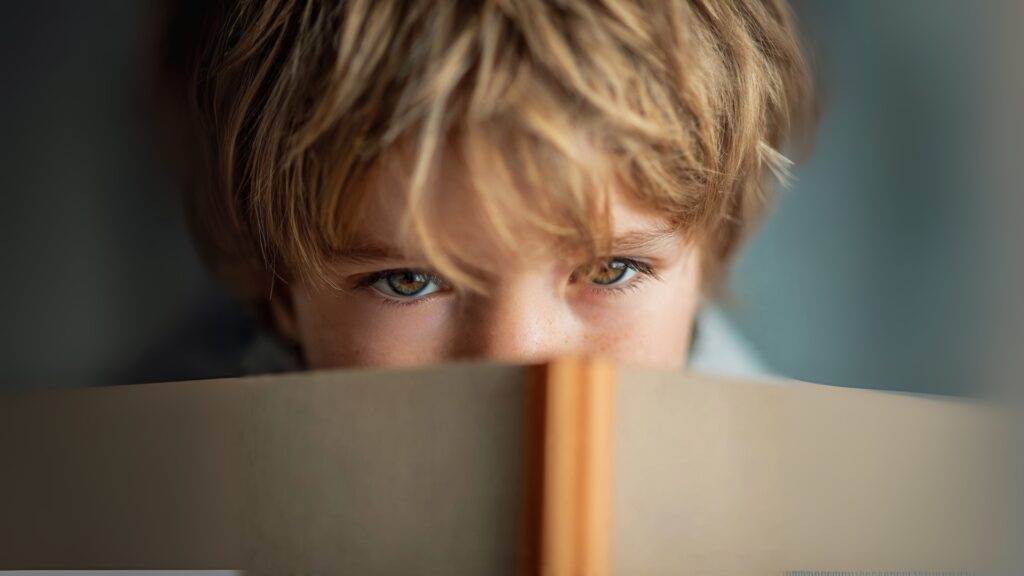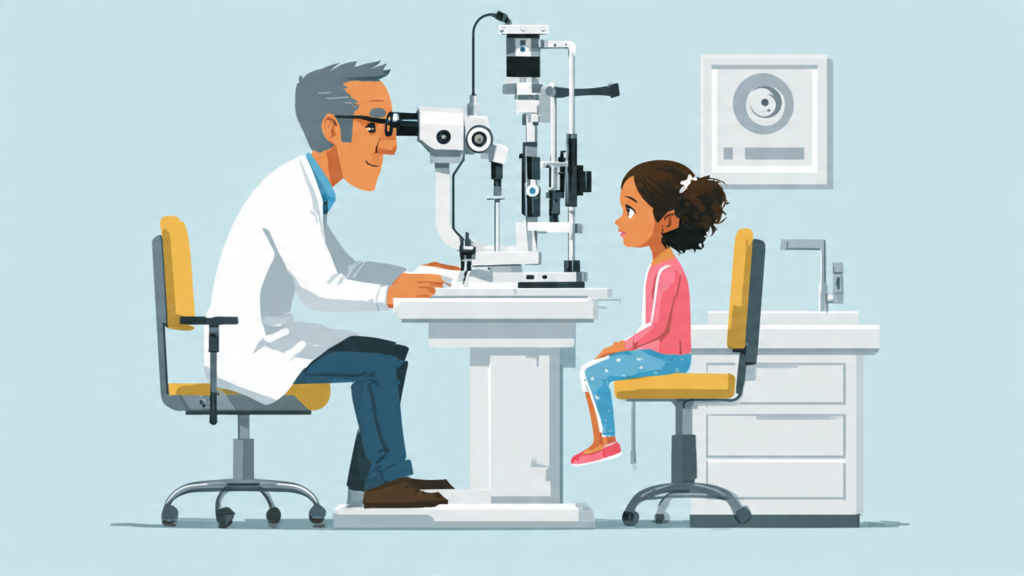Childhood Myopia, also known as nearsightedness, is one of the fastest-growing vision problems in children worldwide. With increasing screen time, reduced outdoor activities, and genetic factors, more children are at risk of developing blurred distance vision at an early age. Early detection, prevention, and management of myopia are crucial to protect eye health and prevent complications in the future. In this blog, we’ll explore the causes, prevention tips, and effective management strategies for Childhood Myopia, along with how BYSIPIN from Neomedix Healthcare supports better eye care for children.
Disclaimer :- This blog is for informational purposes only and does not replace professional medical advice.Always consult an ophthalmologist or healthcare provider for diagnosis and treatment of Childhood Myopia.
Childhood Myopia: Causes, Prevention, and Management

Good vision is vital for a child’s learning, growth, and overall development. Unfortunately, Childhood Myopia, or nearsightedness, is becoming increasingly common worldwide. Children with myopia can see objects up close clearly, but distant objects appear blurry.
If left unmanaged, Childhood Myopia can progress and increase the risk of serious eye conditions later in life. The good news is that with early detection and proper management, children can enjoy healthy vision. In this blog, we will explore the causes, prevention, and management of Childhood Myopia, and how BYSIPIN from Neomedix Healthcare supports better eye care.
Childhood Myopia: Causes, Prevention, and Management
Childhood Myopia is a condition where the eyeball is longer than normal or the cornea is too curved, causing light rays to focus in front of the retina instead of directly on it. This leads to blurred distance vision.
It usually begins in school-age children and may worsen during teenage years when the eyes are still growing.
Causes of Childhood Myopia
Several factors contribute to the rising cases of myopia in children:
- Genetics – Children with one or both parents having myopia are at higher risk.
- Excessive Screen Time – Prolonged use of smartphones, tablets, or computers increases eye strain.
- Lack of Outdoor Activity – Limited exposure to natural light affects normal eye development.
- Poor Reading Habits – Holding books too close or reading in low light can worsen vision problems.
- Eye Growth Abnormalities – Irregular development of the eye’s shape may cause early onset of myopia.
Symptoms of Childhood Myopia
Parents should watch out for these warning signs:
- Squinting to see distant objects clearly
- Frequent headaches or eye strain
- Sitting too close to the television
- Difficulty seeing the blackboard at school
- Rubbing eyes frequently
Early recognition of these signs can ensure timely treatment.
Prevention of Childhood Myopia
While Childhood Myopia cannot always be completely prevented, certain lifestyle practices can help reduce the risk and slow progression:

1.Encourage Outdoor Activities
Spending at least 1–2 hours outdoors daily has been shown to lower the risk of developing myopia. Natural light helps regulate eye growth.
2. Limit Screen Time
Set healthy limits for smartphones, tablets, and video games. Encourage children to take breaks using the 20-20-20 rule (every 20 minutes, look at something 20 feet away for 20 seconds).
3.Promote Good Reading Habits
Ensure proper lighting while studying and maintain at least 30–40 cm distance from books or screens.
4.Balanced Nutrition
Provide a diet rich in eye vitamins and minerals like Vitamin A, C, and Zinc to support vision health.
5.Regular Eye Check-Ups
Routine visits to an eye specialist help in early detection and proper management of Childhood Myopia.

Management of Childhood Myopia
If diagnosed, effective management options include:
1. Prescription Glasses or Contact Lenses
The most common way to correct blurred vision and help children see clearly.
2. Specialized Lenses
Newer lenses can slow the progression of myopia in children.
3. Eye Drops and Medications
Certain medications, under the guidance of an ophthalmologist, may help in controlling eye growth.
4. Lifestyle Modifications
Balancing screen time, outdoor play, and healthy reading habits significantly supports management.
BYSIPIN by Neomedix Healthcare: Supporting Myopia Care
At Neomedix Healthcare, we are committed to advancing eye health with innovative products. One such solution is BYSIPIN, designed to support the management of Childhood Myopia.
- Helps in slowing down the progression of myopia in children
- Safe and effective when used under medical supervision
- Supports long-term eye health and reduces future risks
With BYSIPIN from Neomedix Healthcare, parents and doctors have a reliable solution for protecting children’s vision.
Tips for Parents
- Pay attention to your child’s complaints about vision.
- Encourage at least 2 hours of outdoor play daily.
- Make eye exams a part of routine health check-ups.
- Educate children about the importance of eye health.
Use BYSIPIN and other recommended treatments as advised by the ophthalmologist.
Conclusion
Childhood Myopia is a growing concern, but with early detection, prevention, and effective management, children can enjoy healthy and clear vision. From encouraging outdoor activities to using specialized treatments like BYSIPIN from Neomedix Healthcare, parents can protect their child’s eyes from long-term damage.
Remember, good vision is essential for learning, growth, and confidence. Prioritize your child’s eye health today for a brighter tomorrow.




